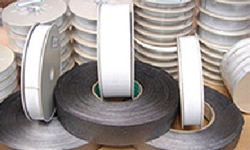Carbon Fiber is a high-strength and lightweight material that is commonly used in the aerospace and automotive industries. It is composed of thin strands of carbon that are woven together to form a fabric. This fabric is then coated in resin and hardened to create a strong and durable material that can withstand high levels of stress and strain. Carbon fiber is also highly resistant to corrosion and can withstand exposure to a wide range of chemicals and environmental conditions. With its unique properties, there has been growing interest in using carbon fiber in the construction industry.

Can carbon fiber be used as a building material?
Carbon Fiber Reinforced Polymer (CFRP) has been used in construction for some time but is still relatively new as a building material. It has mainly been employed for strengthening and reinforcing concrete structures. However, due to the high cost of carbon fiber and the limited availability of skilled labor to work with it, it has not seen widespread use in the construction industry.
What are the benefits of using carbon fiber in construction?
Carbon fiber offers several advantages over traditional building materials such as steel and concrete. It is lightweight, strong, and highly resistant to corrosion. Carbon fiber is also an extremely durable material that can withstand high levels of stress and strain. Additionally, it has a low thermal expansion coefficient, meaning it will not expand or contract significantly with changes in temperature. These properties make it an ideal material for use in earthquake-resistant structures.
What are the drawbacks of using carbon fiber in construction?
One of the biggest drawbacks of carbon fiber is its price. It is a very expensive material compared to other building materials such as steel and concrete. Additionally, carbon fiber requires a high level of skill and expertise to work with, which limits the number of construction professionals who can use it. Finally, carbon fiber is also a relatively new material and has not been tested for long-term durability in construction applications.
What are some current uses of carbon fiber in construction?
Carbon fiber is currently being used in the construction of high-rise buildings, bridges, and other infrastructure projects. It is commonly used to reinforce and strengthen concrete structures, as well as to provide additional support to steel beams and other load-bearing components. Carbon fiber is also being explored for use in the construction of prefabricated building panels, which can help to reduce construction times and costs.
What is the future of carbon fiber in construction?
As carbon fiber becomes more widely available and the cost of production decreases, it is likely that we will see an increase in its use in the construction industry. Advances in technology are also enabling the creation of new composites that combine carbon fiber with other materials to create even stronger and more durable building components.
In conclusion, carbon fiber is a unique and highly advantageous material with great potential in the construction industry. Although it is currently limited by its high cost and limited availability of skilled professionals, ongoing research and innovation in the field are likely to drive down costs and make it more accessible to builders and contractors.
Ningbo Kaxite Sealing Materials Co., Ltd. is a leading manufacturer of high-quality carbon fiber reinforced polymer products for the construction industry. From strengthening concrete structures to building earthquake-resistant structures, our carbon fiber products meet all of your needs. Contact us today at
kaxite@seal-china.com to learn more about our products and services.
References:
Park, K. J., Kim, M. H., & Yeo, G. T. (2005). Seismic Performance of Carbon Fiber Reinforced Polymer (CFRP) Confined Concrete Cylinders and Prisms. Journal of composite materials, 39(21), 1975-1993.
Wang, C. H., & Lee, C. S. (2008). Experimental study on bond behavior between carbon fiber and concrete. ACI Materials Journal, 105(2), 147-153.
Panahi, F., Damghani, M., & Mirzababaei, M. (2016). Carbon fiber reinforced polymer strengthening of rectangular masonry columns under quasi-static and seismic lateral loads. Journal of Composites for Construction, 20(1), 04015025.
Zhao, X., Pietraszkiewicz, W., & Zhang, X. (2010). Experimental Investigation of Prestressed Concrete Beam Strengthened with Carbon Fiber Reinforced Polymer Plates. Journal of Composites for Construction, 14(5), 745-755.
Shokrieh, M. M., Nigdeli, S. M., & Rezazadeh, S. (2014). Seismic response of RC Shear Wall strengthened with carbon fiber reinforced polymer and steel angles. Composite Structures, 113, 98-108.
Sohanghpurwala, A. A., & Rizkalla, S. H. (2011). Strengthening of reinforced concrete beams using carbon-fiber-reinforced polymers. ACI Structural Journal, 108(6), 709-717.
Lee, S. H., Kim, M. J., & Lee, I. S. (2010). Experimental study on flexural performance of reinforced concrete beams strengthened with carbon fiber reinforced polymer sheets. Journal of Reinforced Plastics and Composites, 29(13), 1974-1990.
Saadatmanesh, H., & Ehsani, M. R. (1990). Behavior of carbon fiber-reinforced polymer-strengthened reinforced concrete beams. Journal of structural engineering, 116(4), 1069-1088.
Wu, C. Y., Ma, C. C., & Sheu, M. S. (2009). Retrofitting of eccentrically loaded reinforced concrete columns with carbon fiber reinforced polymer sheets. Journal of composites for construction, 13(6), 431-446.
ACI Technical Committee 440. (2008). Guide for the design and construction of FRP-RC structures. American Concrete Institute, Farmington Hills, MI.
Brokate, D. A., Marchand, K. A., & Wight, J. K. (1998). Effect of carbon fiber reinforced polymer lamina properties on the bond strength of reinforced concrete. ACI Structural Journal, 95(6), 718-727.
